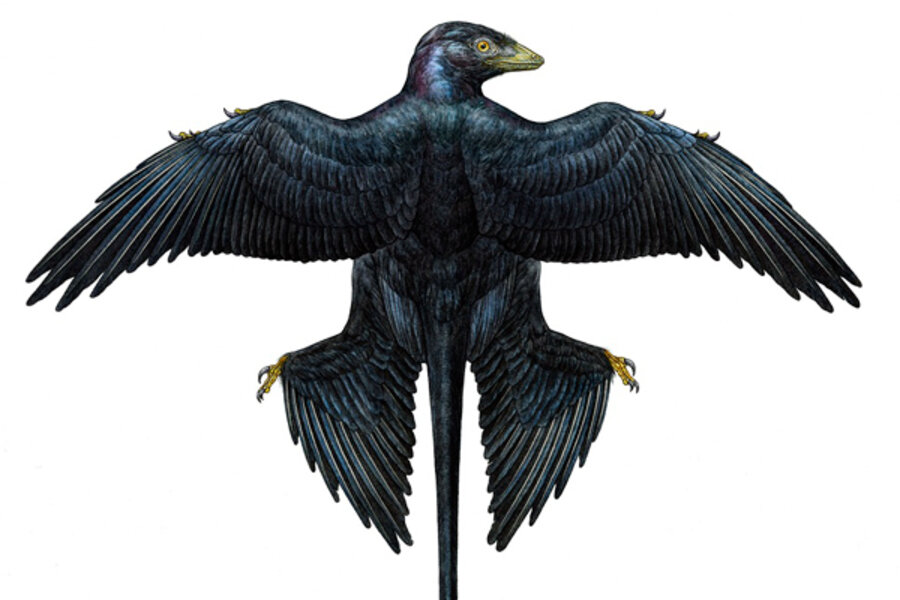Tiny dinosaur sported shimmery black coat, decorative streamers, four wings
Loading...
A new fossil of a four-winged dinosaur about the size of a pigeon shows he apparently sported quite the costume, complete with glossy black feathers and a tail tipped with a pair of decorative streamer feathers.
The newly discovered fossil of Microraptor lived about 130 million years ago, during the early Cretaceous period, in what is now northeastern China. The latest depictions of the beast, whose feathery adornments may have extended to other Microraptor species, suggest it looked similar to a crow, even though non-avian dinosaurs had already separated from the ancestors of modern birds by that time.
It may have looked like a crow, but researchers also think it may have flashed its tail feathers in the manner of a peacock.
Feather comparison
The researchers analyzed the fossil feathers using a scanning electron microscope to see melanosomes, tiny structures (about one-hundredth as wide as a human hair) that give feathers their colors. [Photos of Tiny Dino's New Feathers]
The researchers compared the arrangement of these melanosomes with those of modern birds. When melanosomes are stacked neatly, the feather looks darker; when they are more disorganized, the feather appears lighter.
From their analysis of modern birds, the researchers figured that this Microraptor fossil had black feathers. Furthermore, the narrow stacking of the melanosomes would have given the feathers iridescence. The researchers couldn't be sure of the color of the sheen, or the effect of the iridescence on the feather color, because those factors depend on the thickness of the feather's keratin coat.
"That keratin is not preserved in the fossil, so we couldn't directly infer a particular color of iridescence," said study researcher Matthew Shawkey, an assistant professor at the University of Akron, in Ohio.
For their drawings of the dinosaur, the researchers went with a middle-of-the road estimate.
Shake your tail feathers
Microraptor also had elongated tail feathers, which were much better preserved in this new specimen than in previous fossils. (The firstMicroraptor was unearthed in 2003.) The researchers could see these feathers were narrower and longer than previous extimates.
"People had interpreted [the tail feathers] as being helpful in aerodynamics, but now we know it wasn't aerodynamic, it actually probably hindered in flight," Shawkey said. Though the researchers think this Microraptor could fly, the long feathers were more likely there for decorative purposes.
The showy feathers, including the decorative ones on the tail, were likely used in courtship or other social interactions, like the tail of the peacock, the researchers say.
"Ithink this is the first example of these very early ornamental tail feathers," Shawkey said. "Whether they lifted their tail up [like a peacock]… there's a possibility that they could have actively displayed it."
The study will be published in the March 9 issue of the journal Science.
You can follow LiveScience staff writer Jennifer Welsh on Twitter @microbelover. Follow LiveScience for the latest in science news and discoveries on Twitter @livescience and on Facebook.







